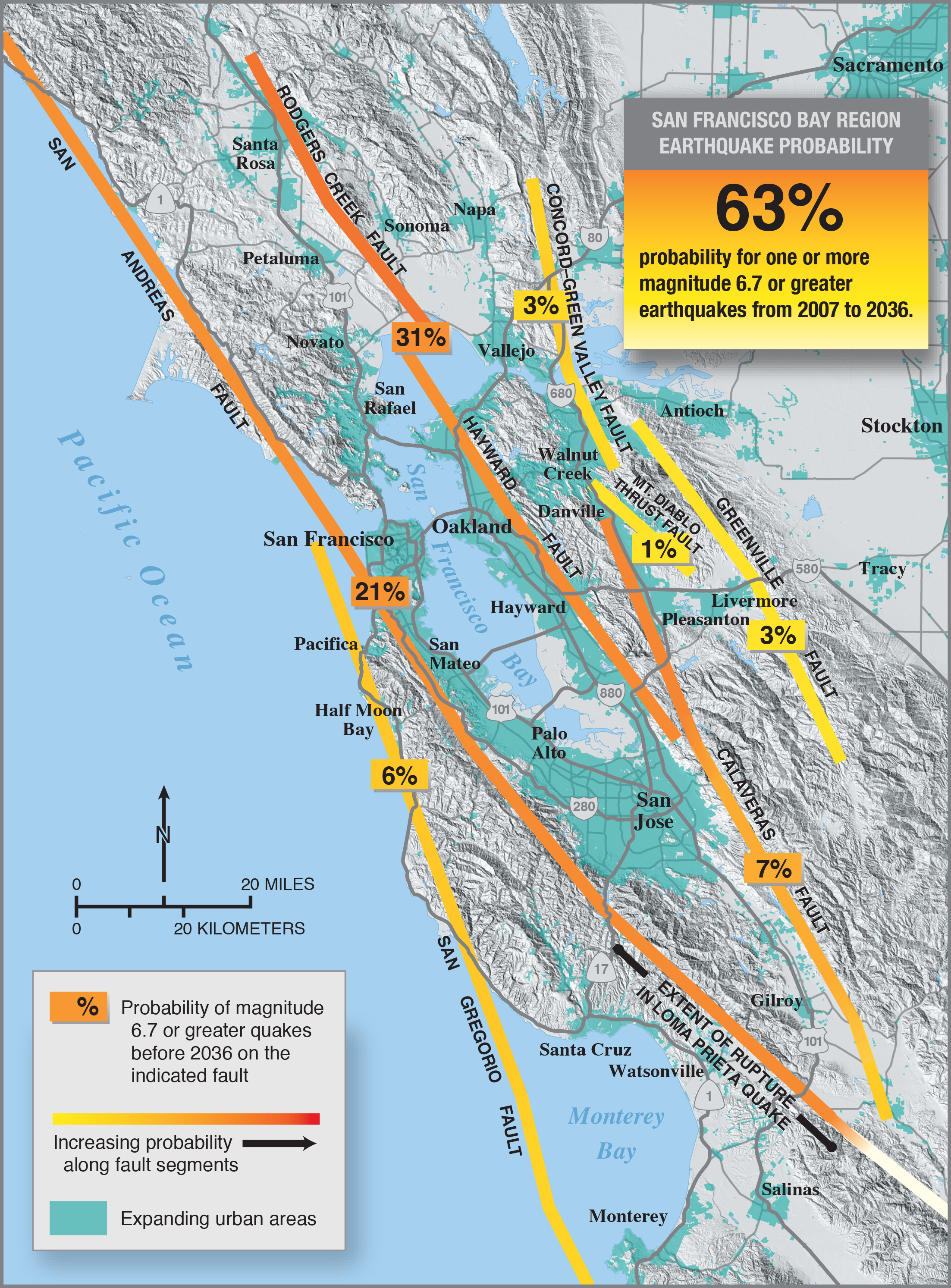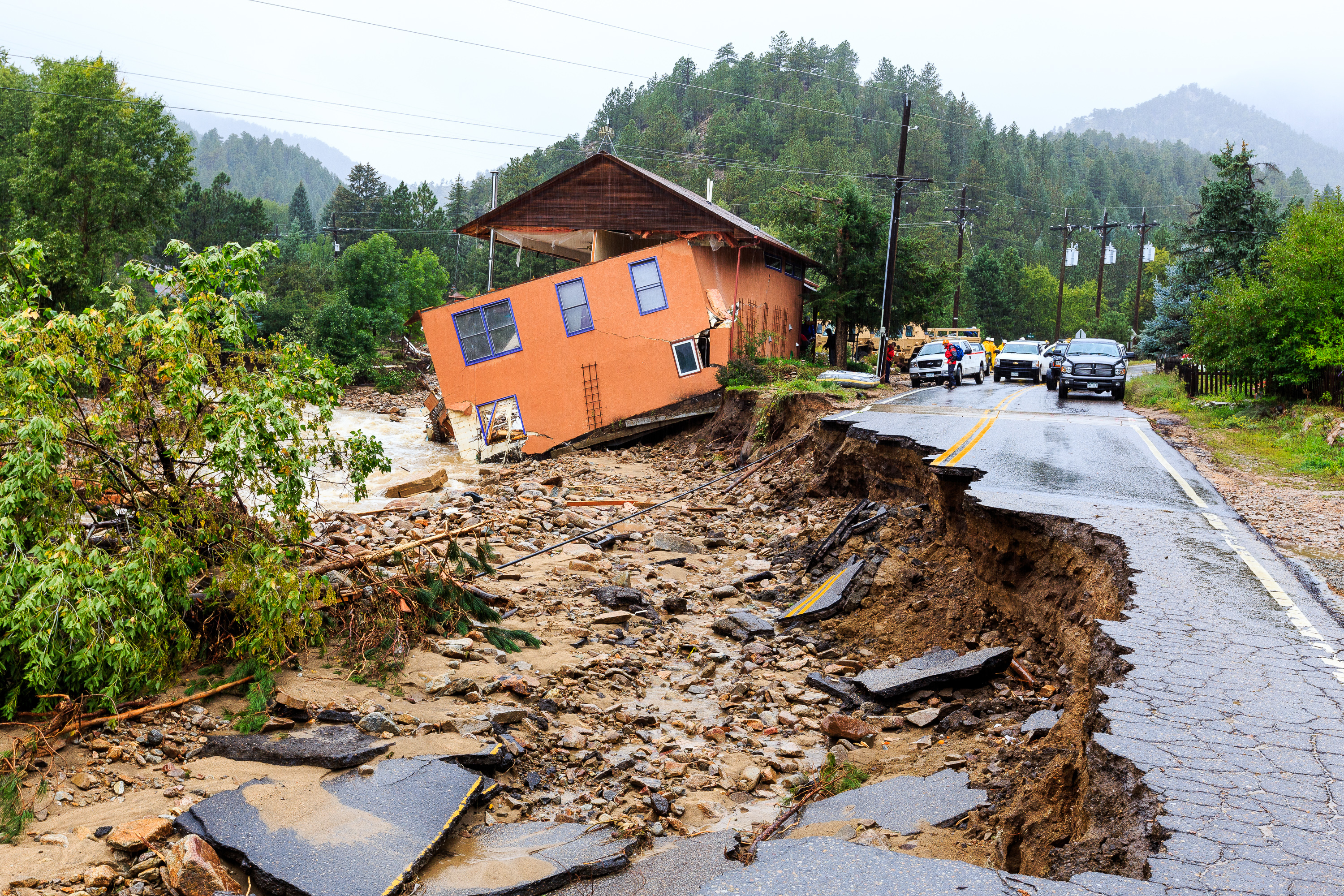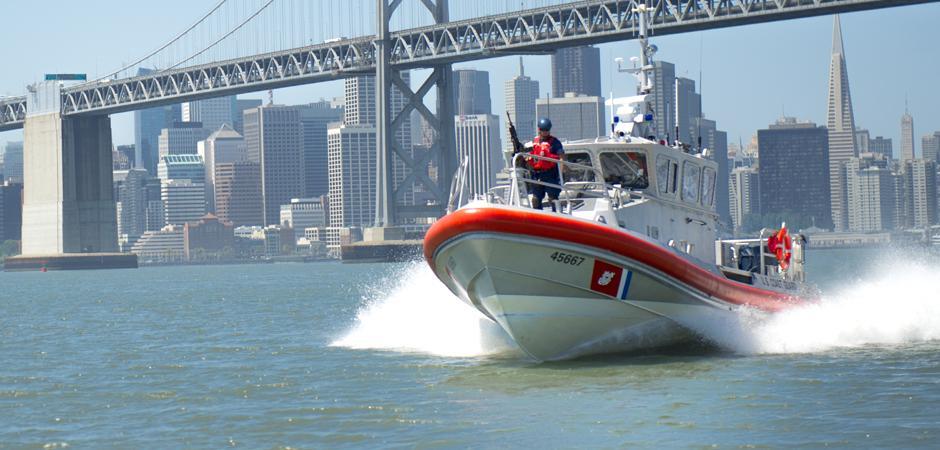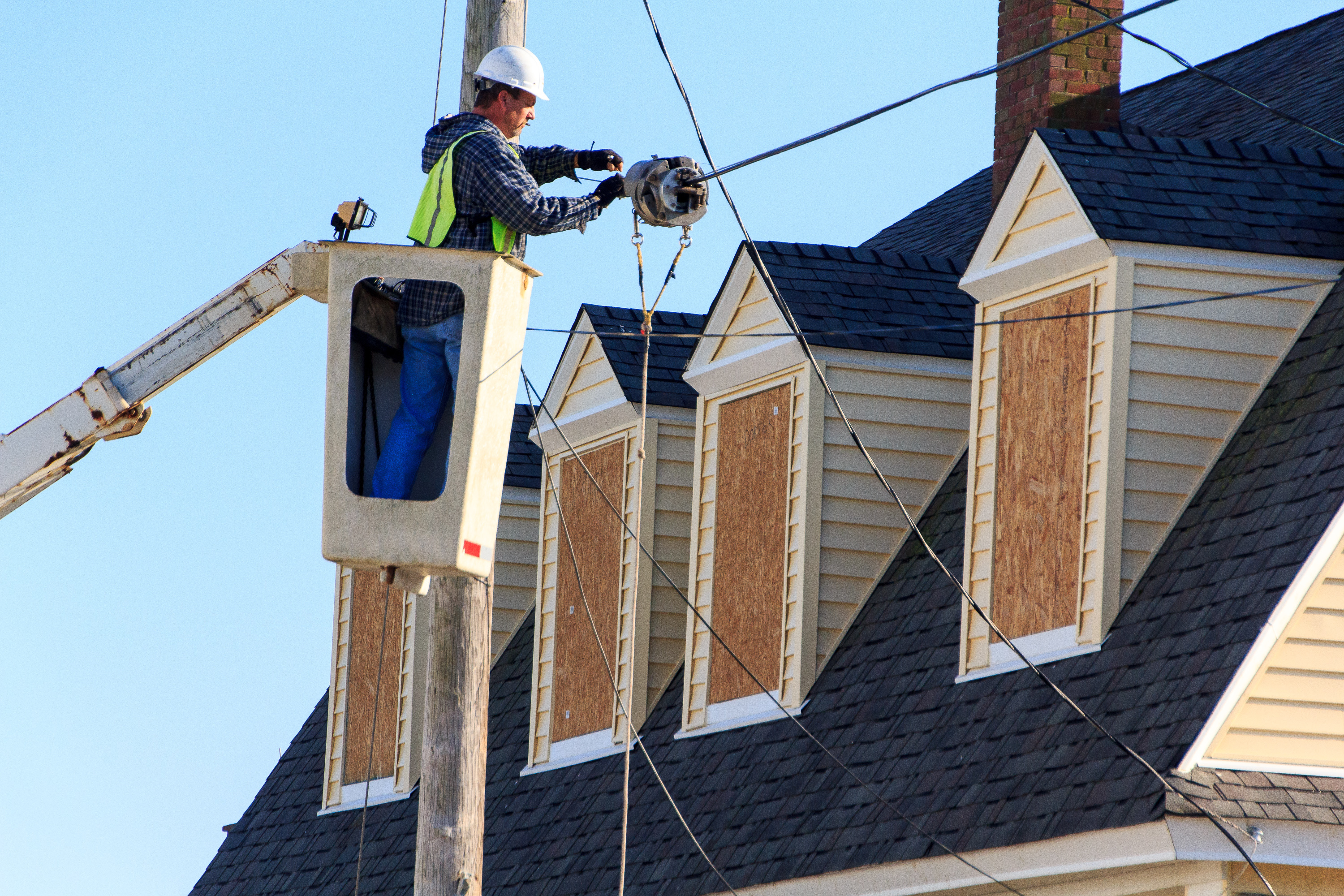On the basis of research conducted since the 1989 Loma Prieta earthquake, U.S. Geological Survey (USGS) and other scientists conclude that there is a 70% probability of at least one magnitude 6.7 or greater quake, capable of causing widespread damage, striking the San Francisco Bay region before 2030. Major quakes may occur in any part of this rapidly growing region. This emphasizes the urgency for all communities in the Bay region to continue preparing for earthquakes.
Links
Earthquake Preparedness
- USGS Earthquake Facts
- Major Quake Likely to Strike Between 2000 and 2030
- Earthquake FAQ’s from the United States Geological Survey (USGS)
- Earthquake Maps & Information from the Association of Bay Area Governments (ABAG)
- Liquefaction Maps & Information from ABAG
- An historical perspective from the 1906 San Francisco Earthquake
- Recent earthquakes in the SF Bay Area
- National Earthquake Hazards Reduction Program
- The California Earthquake Authority (CEA) is a publicly managed, privately funded, not-for-profit organization that provides residential earthquake insurance and encourages Californians to reduce their risk of earthquake damage and loss.







